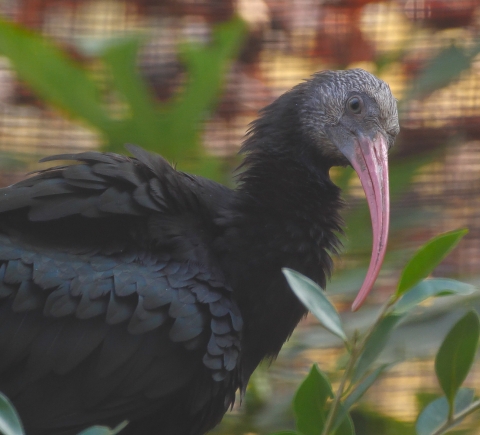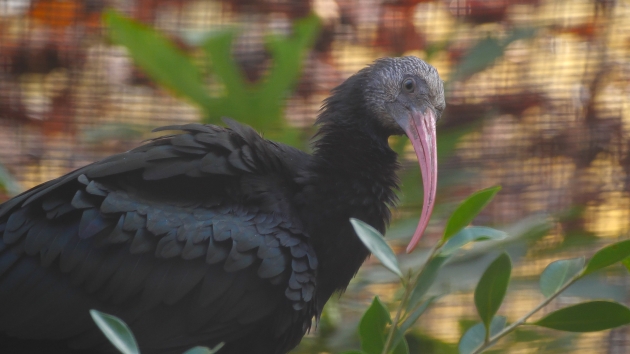


The ibis is a species of bird in danger of extinction, according to the International Union for the Conservation of Nature (IUCN), which has been present at Barcelona Zoo since 2019
There are currently only 700 ibises in the wild, although their number has grown in recent decades thanks to the conservation programmes carried out in Morocco and various European zoos
Those released into the wild, born in Barcelona Zoo last year, are fitted with GPS transmitters, funded by the Barcelona Zoo Foundation, which will help with monitoring and assessing the success of reintroducing this species into the wild
In November, two male hermit ibises (Geronticus Eremita), born in Barcelona Zoo last year, were released in Vejer de la Frontera (Cadiz). This bird is native to the Mediterranean Basin, and is considered to be in danger of extinction by the International Union for the Conservation of Nature (IUCN).
The Barcelona specimens left at the start of October. Before their reintroduction into the natural environment, they underwent a period of quarantine at the Zoo and Botanical Garden in Jerez and a few weeks adapting on an estate in Vejer de la Frontera, from where plans were made to release them into the wild in small groups, on a daily basis, to favour their assimilation into the released groups.
The two birds are fitted with GPS transmitters, funded by the Barcelona Zoo Foundation, which will help with assessing the success of their reintroduction into the wild.
Barcelona Zoo incorporate this species in 2019 at the recommendation of the coordinator of the European Endangered Species Programme (EEP). They were, specifically, four males from Stuttgart Zoo in Germany, and four females from Nordens Ark (Sweden) who produced their first offspring in 2021.
The last ibises living in the wild, around 700 in total, are found in south-east Morocco and they have all but disappeared from the Near East and Europe where they were found up until the 18th century, even in countries outside the Mediterranean region such as Austria, Hungary and Switzerland.
The current population is mainly distributed between two main groups: the most abundant is sedentary and lives along the Moroccan coastline; the other group, smaller in number, is migratory and travels between Syria and Ethiopia. Their most habitual habitats are arid zones with cliffs, where they establish their breeding colonies. They mainly feed on insects and small invertebrates (amphibians, reptiles and small mammals).
The Zoo Foundation is helping to reintroduce the species into the south of the peninsular through the “Hermit Project”
In 1990, the global hermit ibis population numbered just 250, with fewer than 50 breeding pairs. Also, thanks to the in situ conservation programmes being carried out in Morocco and the ex situ conservation carried out in European zoos through the European Association of Zoos and Aquaria (EAZA) European Endangered Species programme (EEP) its wild populations are growing at a steady rate.
Along these lines, in 2004 the Zoo and Botanical Gardens in Jerez and the regional government of Andalusia launched the “Hermit Project” with scientific advice from the Doñana Biological Station (CSIC). The aim was to study different reintroduction techniques for reintroducing individuals born in captivity in order to establish a sedentary, stable and self-sufficient population in the region.
The Barcelona Zoo Foundation has been collaborating with the programme since 2019 through ex situ breeding and by providing technical teams to carry out monitoring tasks.
The project has enabled two breeding colonies to be established, located on the cliffs of Barca de Vejer (Vejer de la Frontera) and the Torre de Castilnovo (Conil de la Frontera). In all they have around 200 birds. During this year's campaign to release individual birds, between October 2022 and February 2023, it is hoped to introduce a further 40 into the wild from various zoos, including Barcelona Zoo.
This year there has been a notable increase in the number of pairs. Between the two colonies there are 28 pairs and 32 fledglings, which is a record for the population. With these numbers, it is thought they are close to reaching the minimum number required for a viable population that will continue to grow without the need to release more individuals bred ex situ.

